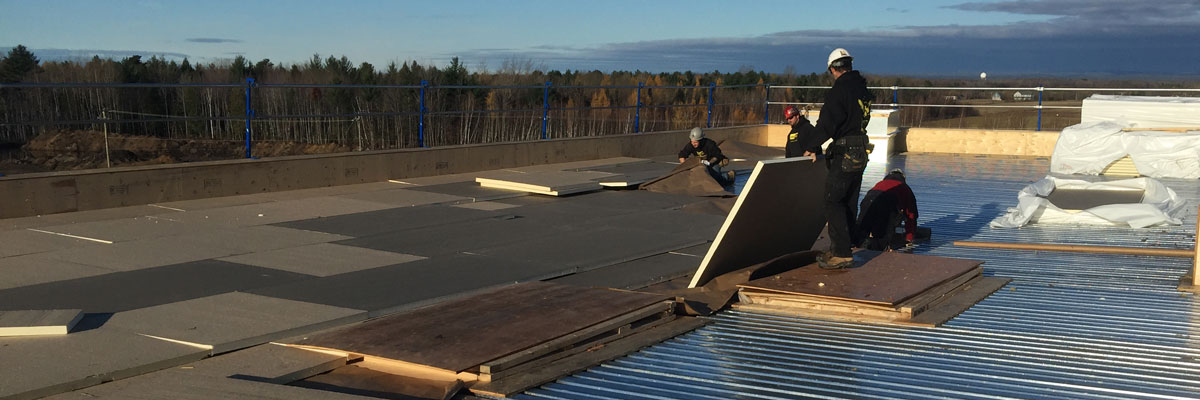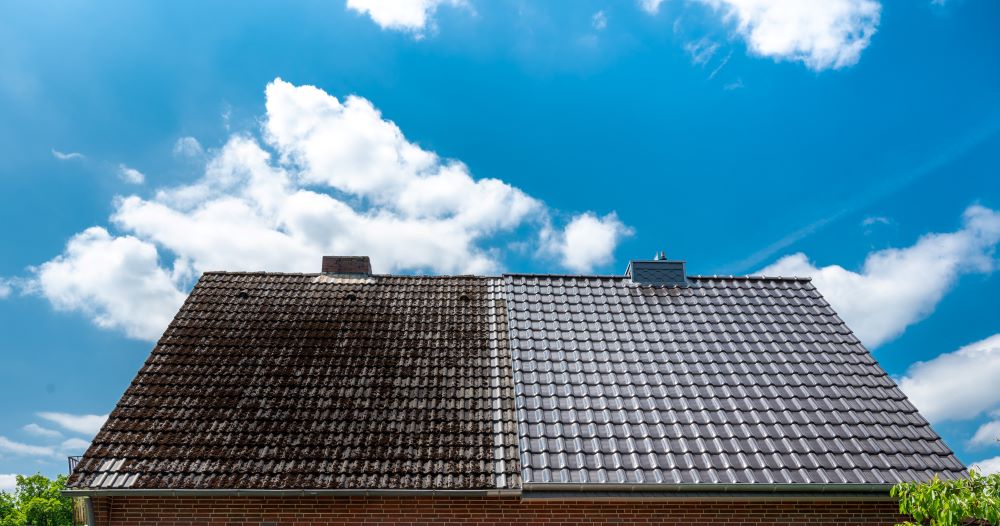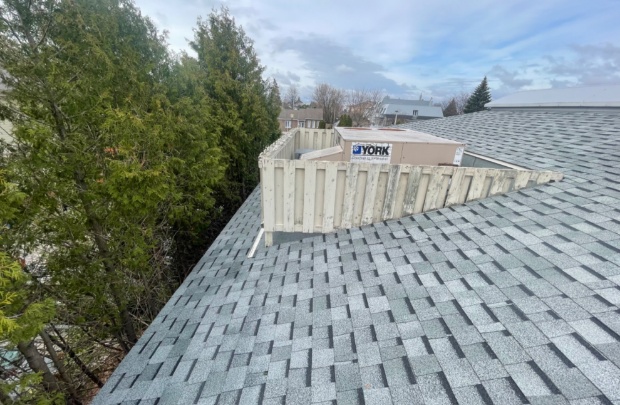EPDM roofing membrane is an innovative and durable roof covering that is the solution of choice for flat and low-slope roofs. This type of roofing is resistant to extreme weather conditions and lasts a long time, making it a reliable alternative to traditional roofing methods.
In this article, our Montreal roofers explain what makes EPDM roofing unique. Keep reading to learn about the advantages it offers, how to install it and the type of maintenance that will maximize its lifespan.
EPDM membrane
EPDM (ethylene-propylene-diene monomer) membrane is a synthetic rubber roof covering that offers excellent resistance to extreme weather conditions, UV rays and ozone.
Its unique composition makes it perfect for flat roofs in the residential, commercial and industrial sectors.
Advantages of EPDM roofing
EPDM is a type of flat roof membrane with many benefits, making it an attractive choice for both home and business owners.
Exceptional durability and longevity
EPDM membranes are known to last a long time, with a lifespan that can easily go beyond 30 years, lasting even up to 50 years. It is resistant to UV, ozone and climatic variations, meaning it will retain its physical properties over long periods of exposure.
Resistance to extreme weather conditions
Since it is a type of synthetic rubber, EPDM roofing can withstand extremely cold or hot temperatures without cracking, deforming or losing elasticity. It also offers excellent resistance to all precipitation – rain, snow or hail.
Easy installation and low maintenance
It doesn’t take long to install an EPDM membrane, and installation does not require the use of an open flame, which greatly reduces associated risks. Once installed, it requires very little maintenance. Regular inspections and minor repairs are usually enough to keep it up to par.
Positive environmental impact
EPDM is an environmentally friendly choice because it lasts a long time, reducing the need for frequent replacement, and because it is recyclable. EPDM membranes can also be used to create white roofs, which help reduce air-conditioning costs and the overall carbon footprint of your building.
How to install an EPDM membrane
It is important to install EPDM roofing membrane correctly and precisely to guarantee that it will be strong and last a long time. Certified roofers explain.
1. Surface preparation
The first step is to carefully prepare the roof. This means making sure that the surface is clean, dry and free of debris, and any irregularities or sharp objects have been removed, to avoid puncturing the membrane.
2. Placing the membrane
The EPDM membrane is then unrolled and spread over the roof surface. At this stage, it’s important to let it sit for a few hours so that it can acclimatize and relax. This will reduce the risk of wrinkles or tensions in the material.
3. Attaching the roof covering
There are several possible ways to attach an EPDM membrane, depending on the type of roof and the manufacturer’s specifications. The most common methods include fastening it to the roof edges, or full adhesion to the roof surface.
4. Sealing the joints between strips
The joints between the EPDM membrane strips need to be sealed with a special adhesive tape or waterproofing liquid so they will be completely waterproof. This step requires high precision to prevent any roof leaking.
5. Finishing and details
Roof elements such as ventilation ducts, chimneys, etc. require special attention. Pre-formed parts or in-situ molding techniques can be used to create a watertight seal.
How to take care of an EPDM roof
EPDM roofing is known to be durable and to provide effective, long-term protection for flat roofs. However, as for all roof coverings, proper maintenance will maximize its longevity and performance.
- Regular inspections: We recommend carrying out a visual inspection of your EPDM roof at least twice a year, ideally in spring and autumn. It’s important to detect any problems like cracks, bubbles or signs of wear before they become serious.
- Cleaning: EPDM roofing surfaces should be cleaned regularly to remove dirt, debris and leaves, which can trap moisture and encourage the growth of algae or moss.
- Drainage: Make sure your roof’s drainage system is working properly. Gutters and downspouts should be cleaned regularly to avoid blockages that could cause water accumulation.
- Repairs: If you notice small holes or cracks in your EPDM membrane, we recommend that you call in a professional.
Choose the right roof covering with Duro-Toit
Duro-Toit offers recognized expertise in EPDM membrane installation, maintenance and renovation for flat roofs. Our dedicated and experienced team of professionals does flawless, long-lasting installations that will protect any roof and keep it looking great for years to come.
Whether you’re planning a new installation, a complete renovation or simply need to do preventive maintenance, our roofers are at your service with high-quality, custom solutions. Trust us with your project to enjoy total peace of mind and satisfaction, guaranteed.



